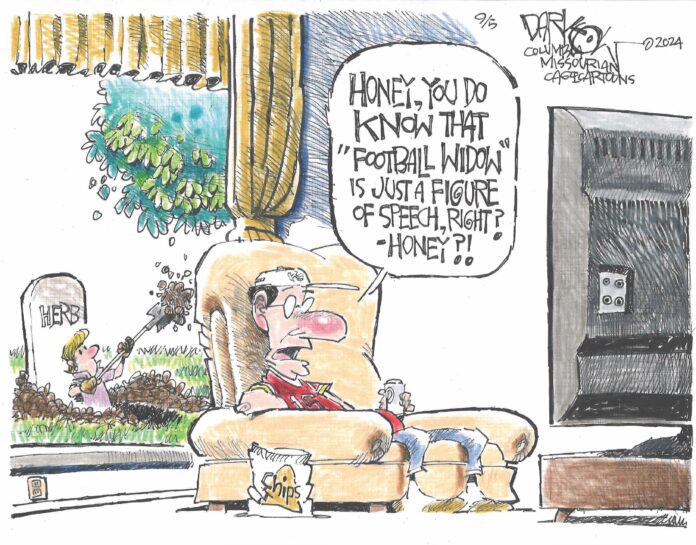When I first started following sports, the 12-team NFL ended its season in December [and the Lions won]; the eight-team NBA [only three teams playing in the same cities now] ended in mid-April [Hawks won]; the six-team NHL [in the middle of the Canadiens’ five straight titles] also finished in mid-April.
Times have changed. The fall/winter sports now push through spring toward summer.
Evaluating the talent – and trying to compare different eras [a lot more eras have come and gone since I started] gets trickier all the time.
Quantification requires isolating entities from the milieu essential for their existence. Numbers simplify a complex world, exorcising the context to be explored and explained. But we always lose the context.
Thus, passing incompletions and interceptions are used as talking points about quarterbacks and are factors in the passer rating system, a mathematical equation based upon completion percentage, yards per attempt, touchdown percentage and interception percentage.
But if a quarterback delivers a perfect pass and the receiver drops it, the incompletion counts against the passer, who also loses potential yards gained. It was the receiver’s fault, but the QB is punished. And he loses again if the butterfingered bumbler was in the end zone.
Also, it does happen that the receiver will have that perfectly passed pigskin hit him in his palms only to bobble it into the hands of a defender. The receiver’s error, the quarterback’s interception.
The quarterback gets blamed in words and statistics for something not entirely under his control.
Situationally favoring the quarterbacks are shovel passes to a back in front of the QB. What are essentially draw plays produce easy completions and add passing yardage.
Quarterbacks are overvalued in general – and not always to their benefit – when star-struck sportswriters and commentators [way too many of both] give them credit – and blame – for their teams’ performances.
Pundits – a term devolved from the Sanskrit word for wisemen – actually assess wins and losses to quarterbacks, who represent only 1/11th of the offense and have no input into what the defense accomplishes – or the special teams, for that matter.
In fact, beginning in 1950, Sports Reference’s football stats have columns for the number of games a quarterback started and his QB Record as a starter.
So, we find wisemen asserting that because Tom Brady won seven Super Bowls, he must be the greatest quarterback ever. Well, how many tackles did ol’ Tom make along the way?
Basically, someone presented a list of personal favorites and switched the criteria to suit the rankings. A cautionary tale.
From the 1930s, when the passing game first emerged as more than an afterthought, NFL QBs have fallen into two categories: system guys and gunslingers. I prefer the latter; the former seem to win more.
Back in the football Middle Ages, Otto Graham quarterbacked the Cleveland Browns to 10 straight championship games across two leagues – and won seven titles. We can give Graham extra credit since he also served time as a defensive back [seven interceptions including one pick six] and a punt returner.
[For extra bragging rights, Graham was a small contributor on the Rochester Royals National Basketball League – pre-NBA – champions in 1946. His teammates included legendary coach Red Holzman, long-time Major League catcher Del Rice and major leaguer and future Rifleman Chuck Connors.]
But does he lose standing with only 12 game-winning fourth quarter drives over 10 seasons? His Browns were usually leading? Brady’s 58 game-winning drives represent the NFL record. The circumstances determine the opportunities.
A native Hoosier, I grew up with Oscar Robertson and Bubby Plump [of the Miracle of Milan] as legendary heroes with mythic stature to rival any demigod. True, they both gained renown within five years of my sporting awareness. But all past is ancient history, and legends are eternal.
My first real Hoosier hoop heroes – aside from Westfield’s own Dick Edwards with the prettiest corner fadeaway jump shot I’ve ever seen – were the Van Arsdale twins, Tom and Dick, who played for Manual High School in Indianapolis, 20 miles to the south. At 6’5”, they were pillars of strength – whom I got to watch on television since the Indiana high school tournament was broadcast live [“Tourney Time”] on one of the four available stations. I still bear the scars of that 10-year-old who saw them lose the state championship in overtime on free throws from what that kid will always consider a phantom foul.
Unlike many athletic brothers, the Van Arsdales were players of equal ability. One might have a better game one night, the other the next. They were both stars and they took that talent to IU’s Hurryin’ Hoosiers for three seasons – each averaging 10 rebounds a game and Tom edging Dick 17.4 to 17.2 ppg. They then moved on to the NBA where they each played 12 seasons.
Still comparable players, Tom logged 929 games, Dick 921; Tom averaged 15.3 points per game along with 4.2 rebounds and 2.2 assists while Dick’s line was 16.4/4.1/3.3. We novices assessing the situation would conclude that the Van Arsdales were still interchangeable.
But not some sabermetrical experts. According to Sports Reference, Tom gets credit for 36.6 career Win Shares while brother Dick logged 75.2 WS. I find it hard to look at their performances and declare Dick to have been twice as valuable as his brother. And with Win Shares based upon the player’s contribution to his team’s total wins, we can hear a situational flaw screaming to be acknowledged.
John Hollinger created another yardstick to measure NBA players. His Player Efficiency Rating takes a player’s stats and distills them into another number. As with most statistical assessments, it is heavy on offensive numbers.
It is no surprise that Michael Jordan tops these career rankings with a PER of 27.91. The next three players are currently active: Nikola Jokič, 27.65; LeBron James, 27.22, and Anthony Davis, 26.96. Rounding out the Top 10 are Shaquille O’Neal, David Robinson, Wilt Chamberlain, Bob Petit, Kevin Durant and Giannis Antetokounmpo, who just this year edged past Neil Johnston, a star from the ‘50s.
Petit led those aforementioned St. Louis Hawks to glory though Cliff Hagan, who had the most famous hook shot pre-Kareem Abdul-Jabbar, was my personal hero.
Not in Hollinger’s Top 100 is Bill Russell. Some might think leading the Celtics to nine championships in 11 seasons represents significant efficiency. But Russell’s PER measures out at 18.9.
Under Hollinger’s system, we can guess that Dick Van Arsdale’s 14.4 PER advantage over Tom’s 13.0 represents those slight edges in scoring and assists. This looks much more palatable than the Win Shares method.
There is a similar situational flaw that surfaces in hockey stats, where players are graded on points per minute, based on how many goals a team scores and gives up while a player is on the ice. So, try to get on the ice alongside Howe, Hull [either one], Gretzky, Lemieux, Crosby, Ovechkin or McDavid. If you are a third- or fourth-liner, your stats will not reflect what your mission might be.
José Ortega y Gasset famously declared, “I am myself and my circumstance.” The same could be said about the situations in which athletes often compete.
Trying to evaluate players is a worthy goal for teams and fans. Comparing them fairly across different eras is also laudable. But most systems have built-in circumstantial biases that confound computations.







